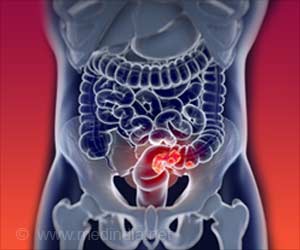
A new 3D imaging model has been created to detect characteristics of blastocysts – the initial phase of development for an implanted embryo – linked to successful pregnancies. This pioneering research was presented today at the ESHRE 40th Annual Meeting in Amsterdam. This novel strategy has the potential to revolutionize existing blastocyst selection techniques and create opportunities for higher success rates in pregnancies (1✔ ✔Trusted Source
New 3D imaging method offers promise of better IVF outcomes
).
The abstract of the study is set to be released today in Human Reproduction, a prominent journal in the field of reproductive medicine.
The success rate of live births through IVF is only 40% for women under 35. The main causes of failure could be due to poor quality of embryo, or the uterus lining may be resistant to implantation. #pregnancyrate #IVF #medindia’
Blastocysts and Their Link to Pregnancy Success Rate
The morphology and structure of blastocysts can indicate the likelihood of a successful pregnancy, facilitating the process of choosing blastocysts for in vitro fertilization (IVF). Nevertheless, the task of selecting the most suitable embryo or blastocyst continues to be a major hurdle in the field of IVF.
“Traditionally, the quality of blastocysts is assessed using 2D methods that lack depth and comprehensive indicators,” says Dr Bo Huang, lead author of the study. “Although some 3D methods exist, they aren’t practical or safe for clinical use. This study bridges that gap by introducing a clinically applicable 3D evaluation method and reveals previously unrecognised spatial features of blastocysts indicative of outcomes.”
The research involved women aged below 40 years with an endometrial thickness (uterine lining) of 7-16mm and no more than one prior unsuccessful embryo transfer. Researchers utilized the EmbryoScope+ device to capture detailed images of 2,141 frozen-thaw single blastocysts.
State-of-the-art technology was used to generate 3D models of the blastocysts, capturing detailed information about their outer layer (trophectoderm) and inner cell mass. These models underwent further analysis to reveal new features of the blastocysts and to understand the correlation between these features and successful pregnancies.
Efficiency of the New 3D Model
The model was evaluated through a comparison with fluorescence imaging of human blastocysts, resulting in an accuracy of more than 90%. The key measurements focused on capturing the size, shape, and cell characteristics of the blastocyst.
Advertisement
The size-related parameters, including total volume, cavity volume, and surface area, were found to have a correlation with increased pregnancy rates, and distinct characteristics of the inner cell mass and outer layer were also closely connected to improved pregnancy results.
Dr. Huang comments, “These results match what we see in clinical outcomes, but we couldn’t previously measure these. This study shows that the 3D shape of the blastocyst’s inner cell mass, it’s position, and how the surrounding cells are arranged can be important indicators of success, which we didn’t know before.”
Advertisement
The research team intends to work with various centers in the future to confirm these findings and invites reproductive centers globally to participate in these endeavors. The primary objective is to establish the 3D assessment of blastocysts as a routine aspect of clinical practice, offering renewed optimism to individuals undergoing IVF.
Professor Dr. Anis Feki, Chair-Elect of ESHRE, states, “While the new 3D imaging model for blastocyst evaluation shows great promise in improving embryo selection for IVF, it is essential to validate these findings through further studies and collaborations. This method could potentially enhance IVF outcomes, but its clinical application should be approached with careful consideration.”
To conclude, the primary objective of this innovative study is to establish 3D blastocyst evaluation as a routine component of clinical practice, providing sense of optimism for individuals undergoing IVF for a higher success rate.
Reference:
- New 3D imaging method offers promise of better IVF outcomes – (https://www.eshre.eu/ESHRE2024/Media/2024-Press-releases/Huang)
Source-Medindia



